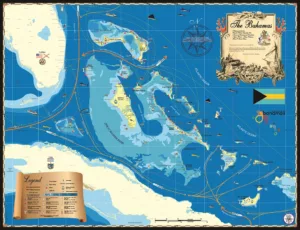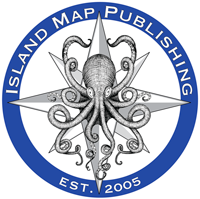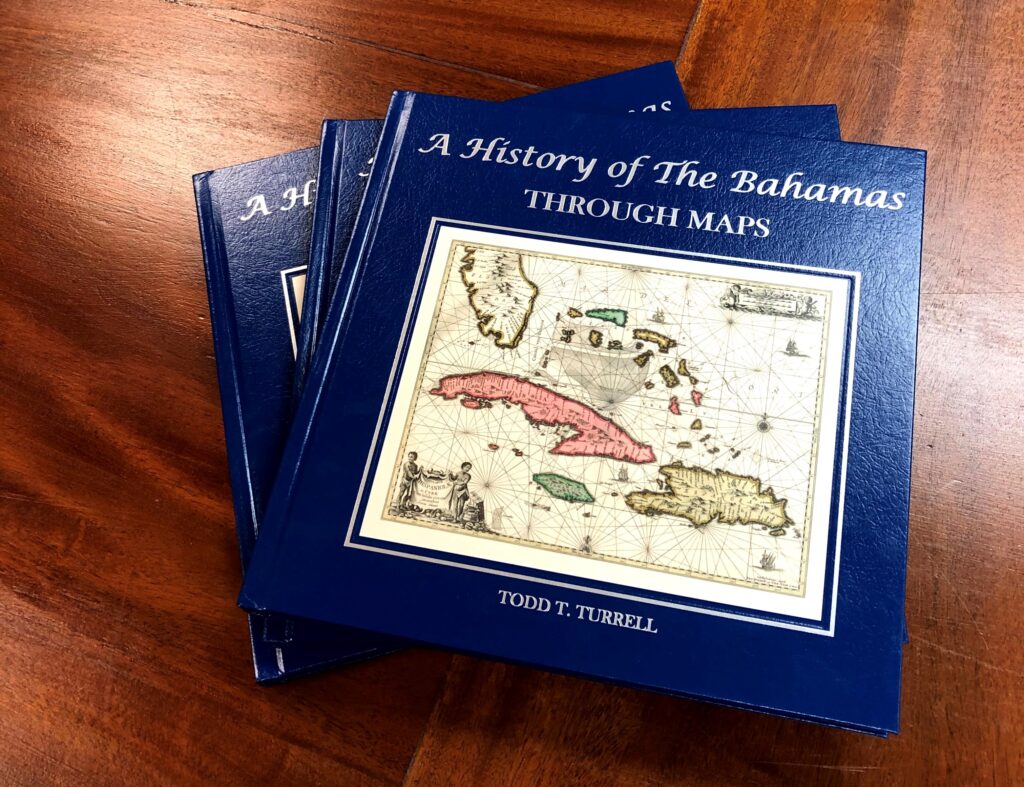Bahamas Dolphin Encounters
 The Bahamas is a much bigger country than people realize when they see our map. It spans from Walkers Cay off the coast of Palm Beach to Great Inagua Island 600 miles away. The next country south of Inagua is Haiti! To the west, the Cay Sal Bank stretches Bahamian territory out towards Havana, Cuba.
The Bahamas is a much bigger country than people realize when they see our map. It spans from Walkers Cay off the coast of Palm Beach to Great Inagua Island 600 miles away. The next country south of Inagua is Haiti! To the west, the Cay Sal Bank stretches Bahamian territory out towards Havana, Cuba.
I’ve been all over the Bahamas for more than 40 years working, fishing, diving, and exploring the outer reaches of the country in my plane or on our dive boat ‘Gone Astray’. We sold our beloved boat to a shark diver in Bimini a few years ago, now she’s featured regularly on Shark Week with all sorts of celebrities aboard.
Dolphins: One of my work projects was researching sand on the vast Bahama Banks where billions of tons exist miles from any coral reef. Sand is about the only natural resource the country has, other than tourism, and is worth billions of dollars to the economy since it’s perfect for Florida beaches. At the time of my dolphin encounter I was working with a world-renowned coastal engineering professor at the University of Florida, Bob Dean. Bob never charged me for his work on Bahamas sand saying it was too important for Florida’s future for him to be conflicted in any way. Bob has sadly passed and politics on both sides of the Gulfstream have prevented the sand from ever being used.
My encounter with the dolphin was underwater on the Little Bahama Bank north of Freeport where a shallow sand desert, hostile to most marine life, covers hundreds of square miles. I was alone on the sea bottom twenty miles from the nearest land when a pod of dolphin traveling through found me gathering sand samples in 30 feet of water. They began swimming around my position in circles, so I stopped work, a bit nervous but happily intrigued at the same time.
Eventually one broke off the pod and came within a few feet of me, just out of arm’s length. It stared at me eye to eye and then slowly inverted nose to sand, with its eye still on mine. I was completely bewildered but it didn’t look threatening and seemed curious as it made clicking noises and other sounds. I stood on the sand with my tank and heavy weight belt watching it and the pod “talking” to each other. It was amazing to see this, and I became more relaxed, five or ten minutes watching them seemed like hours.
Suddenly the boat tending to my work site started up. It was quite a distance away, having drifted off my surface buoy with its motor off (our typical method on calm days). The dolphin quickly looked towards the boat noise and then back at me with a different expression that’s hard to explain. It then righted itself, did one more lap and swam off in the pod with lots of clicking amongst them. I understand dolphins communicate with sounds we can hear and others we can’t – at frequencies too high for human ears. If that’s the case, there was a very lively group session going on. I’m guessing they couldn’t figure out what a human was doing so far from land in an underwater desert, then the boat explained it.
I finished my sampling and surfaced by the buoy, shaking my head in wonder with much more appreciation of marine mammal intelligence, in awe of it. Maybe we humans aren’t so smart after all. The experience changed my perspective of the underwater world which will stay with me forever.
The dolphins are one of many amazing things I’ve seen on or underwater in Bahamian seas over the years. My love of the ocean and islands led to a history book we published on the interesting, and at times desperate, story of the Bahamas’ past.
Artistic maps that invoke your favorite memories.
Whether it’s an 18″ x 24″ glossy poster or a 32″ x 42″ extra large fine art canvas, our maps are conversation starters and the perfect launching pad for your best stories.


